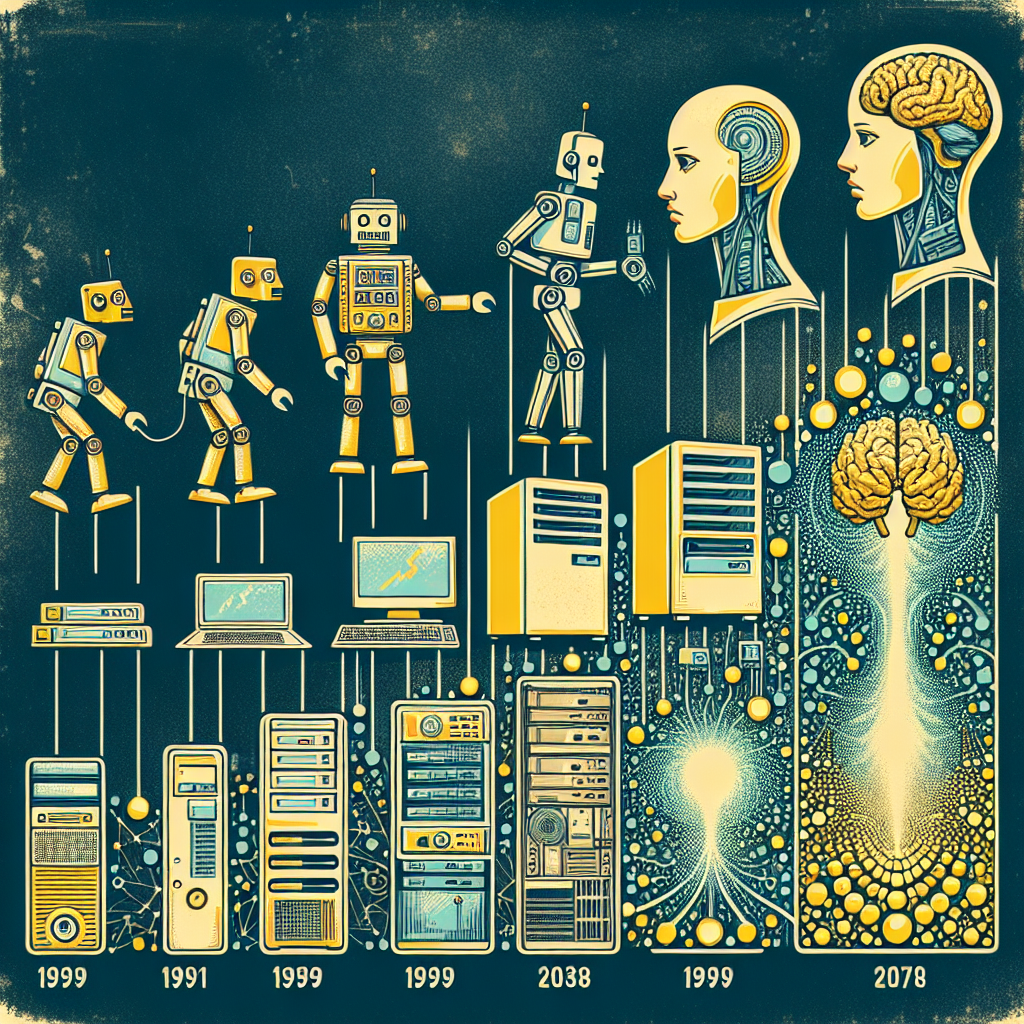The Evolution of AGI: From Sci-Fi Dream to Reality
Artificial General Intelligence (AGI) is a concept that has fascinated scientists, engineers, and science fiction writers for decades. The idea of creating a machine that can think and learn like a human has been a recurring theme in popular culture, with movies like “2001: A Space Odyssey” and “Blade Runner” exploring the possibilities and implications of AGI. But what was once considered a far-off dream is now becoming a reality, thanks to advances in technology and our understanding of how the human brain works.
In this article, we will explore the evolution of AGI, from its origins in science fiction to the cutting-edge research being done today. We will examine the challenges and opportunities that come with creating machines that can think and learn like humans, and discuss the ethical implications of this technology. Finally, we will address some frequently asked questions about AGI and where it may be headed in the future.
Origins of AGI
The concept of AGI can be traced back to the early days of artificial intelligence research. In the 1950s, scientists like Alan Turing and John McCarthy began to explore the idea of creating machines that could think and learn like humans. Turing’s famous “Turing Test” proposed that a machine could be considered intelligent if it could carry on a conversation with a human without the human knowing they were talking to a machine.
McCarthy, on the other hand, coined the term “artificial intelligence” and envisioned a future where machines could perform tasks that required human-level intelligence, such as playing chess or translating languages. These early pioneers laid the groundwork for the development of AGI, but it would be many years before the technology caught up to their vision.
Advances in Technology
Over the past few decades, advances in technology have brought us closer to achieving AGI. One of the key breakthroughs has been the development of deep learning algorithms, which are based on artificial neural networks that mimic the way the human brain processes information. These algorithms have revolutionized fields like image recognition and natural language processing, allowing machines to perform tasks that were once thought to be beyond their capabilities.
Another important development has been the increasing availability of large datasets and powerful computers, which have enabled researchers to train more complex and sophisticated AI systems. Companies like Google, Facebook, and OpenAI are investing heavily in research and development of AGI, and are making rapid progress towards creating machines that can think and learn like humans.
Challenges and Opportunities
While the potential benefits of AGI are vast, there are also significant challenges that must be overcome. One of the biggest challenges is ensuring that AI systems are safe and reliable, and do not pose a threat to human society. There are concerns about the potential for AGI to be used for malicious purposes, such as autonomous weapons or surveillance systems that invade people’s privacy.
There are also ethical considerations to take into account when developing AGI. For example, how do we ensure that AI systems are fair and unbiased in their decision-making? How do we protect people’s jobs and livelihoods in a world where machines can perform tasks more efficiently than humans? These are complex questions that will require careful thought and consideration as AGI continues to evolve.
FAQs about AGI
Q: What is the difference between AGI and narrow AI?
A: Narrow AI refers to AI systems that are designed to perform specific tasks, such as playing chess or driving a car. AGI, on the other hand, is a more general form of AI that can perform a wide range of tasks and learn new skills on its own.
Q: When will AGI be achieved?
A: It is difficult to predict exactly when AGI will be achieved, as it depends on many factors such as technological progress and funding. Some experts believe that we could see AGI within the next few decades, while others think it may take longer.
Q: What are the potential risks of AGI?
A: There are several potential risks associated with AGI, including the possibility of AI systems becoming uncontrollable or being used for malicious purposes. It is important to address these risks through careful research and regulation.
Q: How can we ensure that AGI is developed ethically?
A: There are several ways to ensure that AGI is developed ethically, such as creating guidelines and regulations for AI research, promoting transparency and accountability in AI systems, and involving diverse stakeholders in the decision-making process.
Q: What are some of the potential applications of AGI?
A: AGI has the potential to revolutionize many industries, from healthcare and transportation to finance and entertainment. It could also help us solve some of the world’s biggest challenges, such as climate change and poverty.
In conclusion, the evolution of AGI from a sci-fi dream to a reality is a testament to the power of human ingenuity and technological innovation. While there are still many challenges to overcome, the potential benefits of AGI are vast and could have a profound impact on society in the years to come. By addressing the ethical implications and working together to ensure that AGI is developed responsibly, we can harness the full potential of this groundbreaking technology and create a better future for all.

